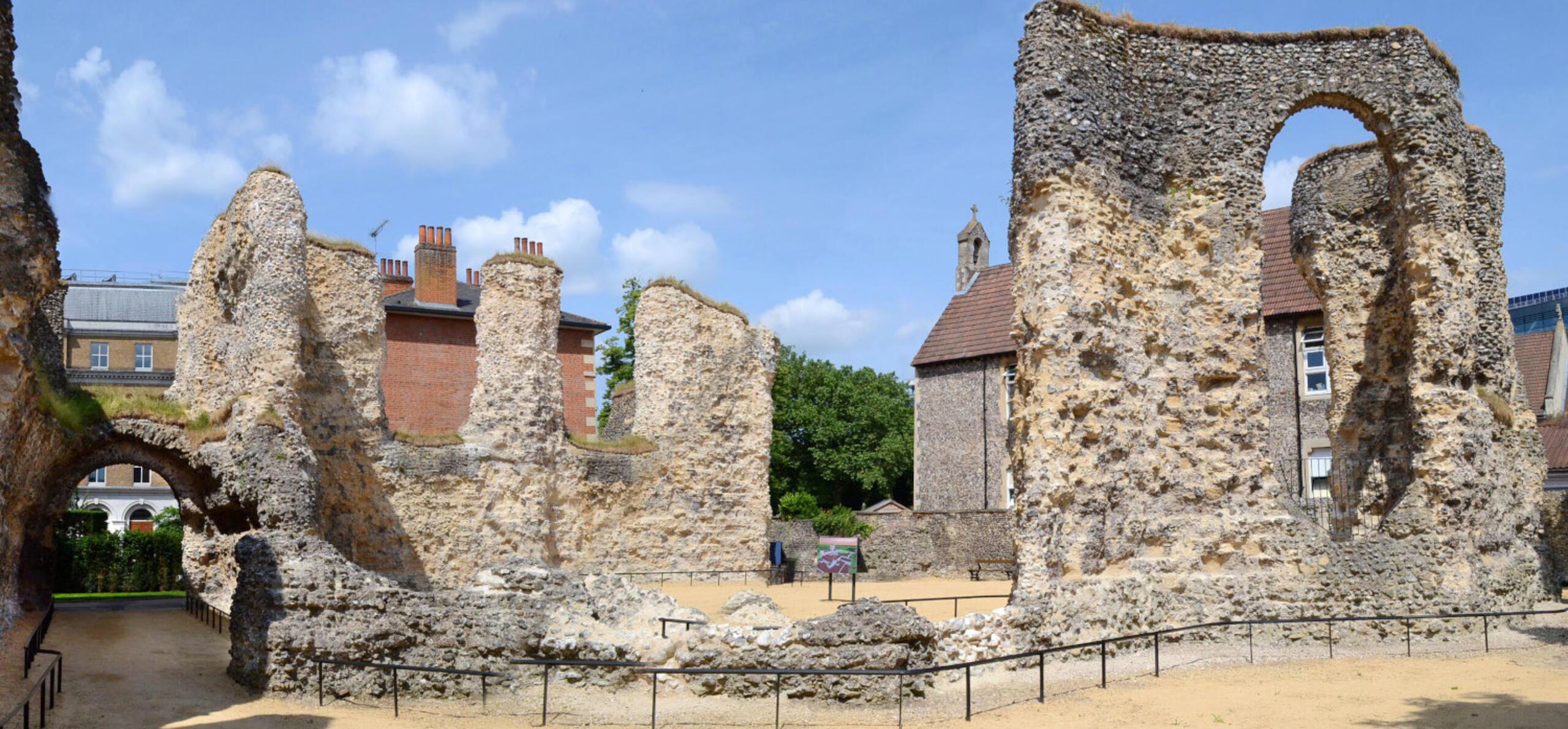A guest blog by Chris Forsey
In February 2017, after a great deal of planning and fundraising, the ruins of Reading Abbey were taken over by a specialist conservation team and reopened to for general public on the 16 June 2018. Almost a decade had passed since they first closed in 2009 due to disrepair.
The preservation of the ruins continues each year. The latest phase began in May, involving conservation of the south wall of the monks' dormitory.
In this blogpost, coinciding with the latest conservation, join us to discover the Abbey's astonishing history and discover the ongoing medieval story right in the heart of Reading.
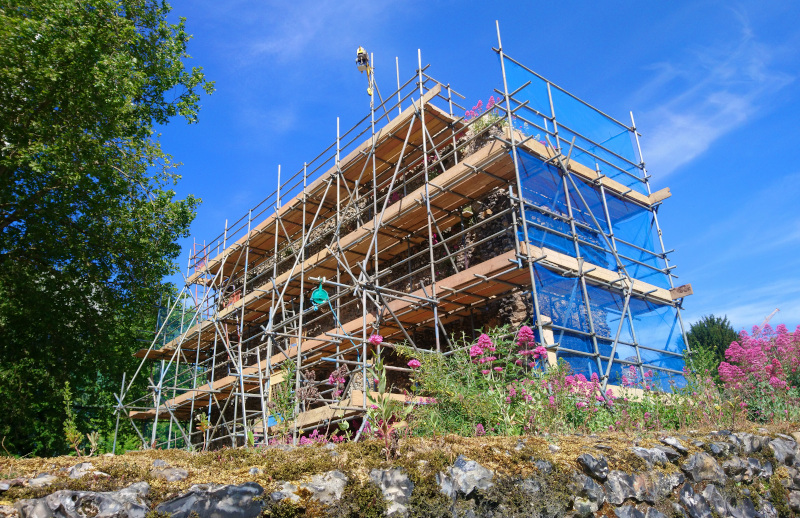
Conservation work on the south wall of the dormitory, May 2020
Built by Henry I in 1121, 901 years ago, and designed to be his last resting place, Reading Abbey quickly grew into one of medieval England’s most important religious centres. Itt was the home of the Cluniac order of monks, originally based in northern France, who went about their daily lives within its beautiful walled precincts.
The daily life of a monk was strictly regimented, revolving around religious worship and study, which took place almost in isolation away from the hurly-burly of the town outside, the Reading of a very distant yesteryear.
The stunning surroundings of the precinct mirrored many other religious sites across Europe, with the Abbey church being the centre of most of worship, but surrounded by other buildings like the abbey mill that catered for the everyday needs of its monks. Traces of paint, which covered stonework inside the Abbey, were copied and painted on to a replica cloister column in Reading Museum, to give an insight into just how colourful the interior might have been.
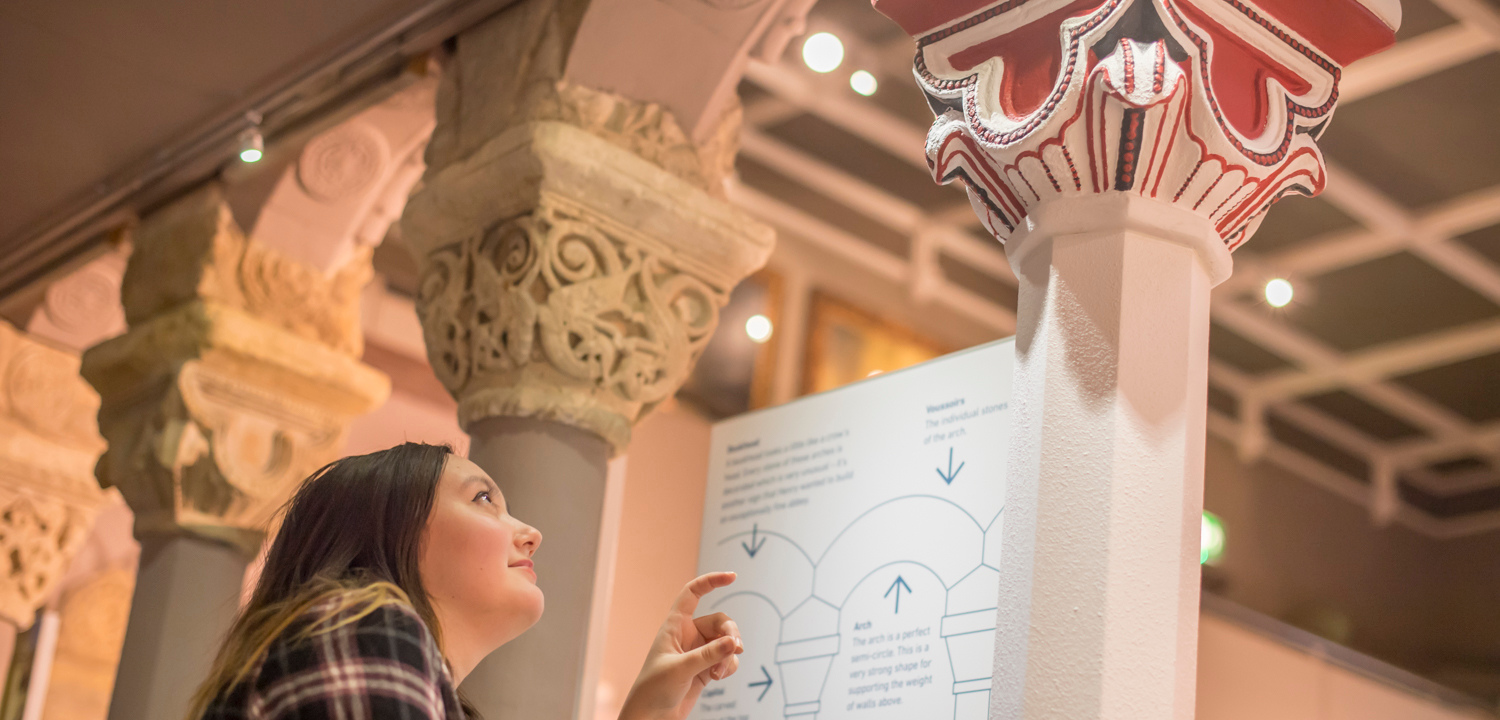
A visitor studying the painted cloister capital at Reading Museum
During the many times of plague and pestilence, crowds of poor and destitute townsfolk gathered at the Abbey gates, begging for ‘alms’ from the Abbot, although special permission was needed by the monks to venture outside.
The first map of ‘Redding’, published in 1611, only depicts the ruinous state of the Abbey (more on this later). However, it does give us clues as to the size and influence that the site held on the town
A swampy area to the south-west was bordered by the Holy Brook, which supplied the Abbey with fresh water and entered the River Kennet just below the necessarium; or, in our terms, the monks' loos.
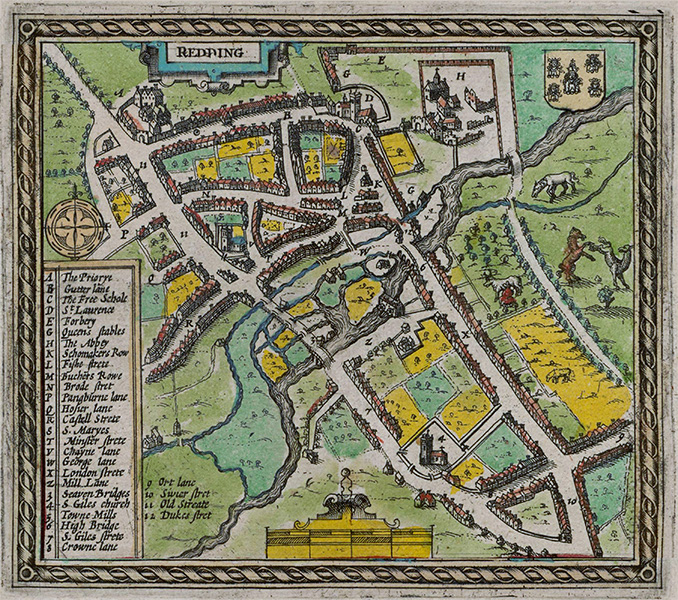
Speed's map of Reading showing the ruinous state of the abbey
Following the dissolution of the monasteries by Henry VIII from 1538, the Abbey almost entirely disappeared as a structure. Vast amounts of building materials were sold off, and eventually left merely the flint core of some buildings standing.
The Abbey's last Abbot, Hugh Cook Faringdon, met a similarly unfortunate fate to the buildings themselves. He was found guilty of treason and then hung, drawn and quartered just outside the gateway in 1539.
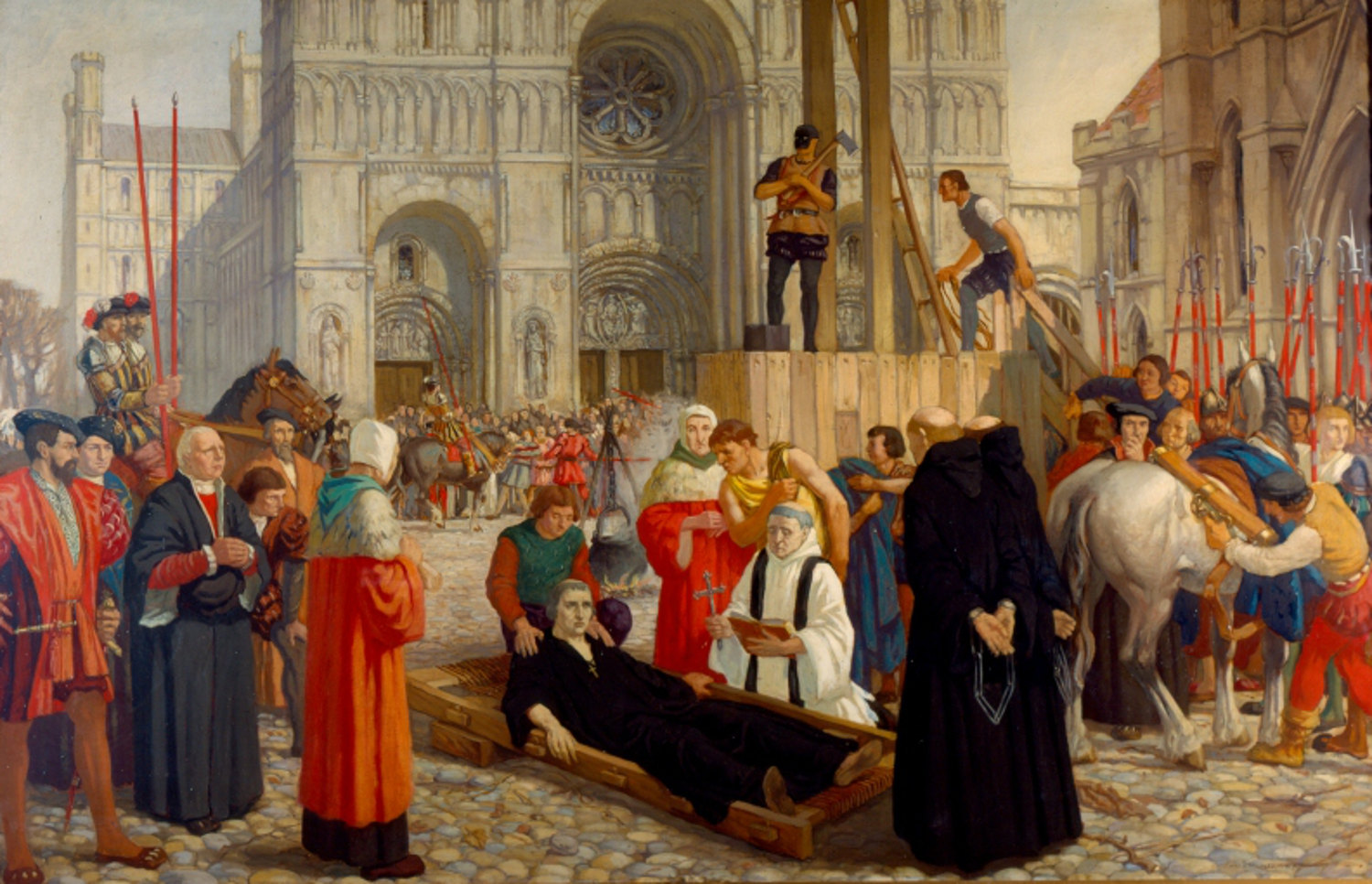
The execution of Abbot Hugh Faringdon - an imagined reconstruction
However, two buildings did survive: the Abbey Gateway, and Hospitium (lodgings for visiting pilgrims), which can still be found standing in St. Laurence’s churchyard.
Queen Elizabeth I took pity on Reading’s plight after the Abbey was dissolved and tried to invigorate the area, visiting many times and witnessing the consequences of her father’s destructive actions.
Reading Minster was built using stones and pillars from the Abbey, and the Holybrook was covered over (by order of Elizabeth I) in Bridge Street, as the decaying wooden bridges that existed previously made it difficult to enter the town.
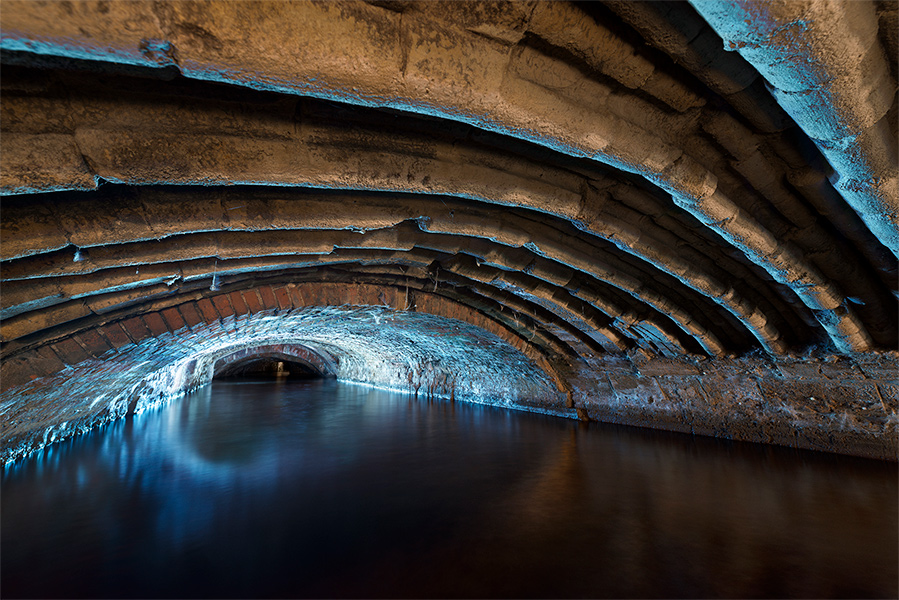
Abbey stonework still forms the roof of the Holybrook culvert under central Reading
Despite hundreds of years of the Abbey site being used as a source of building materials, the pillaging was eventually outlawed, and many townsfolk began to visit the area for recreation, and marvel at what was left standing.
When large pieces of flint began to fall from the walls in 2009, the Ruins were closed to visitors. In response, Reading Abbey Quarter project was formed with £1.77 million of funding from the National Lottery Heritage Fund, to restore and preserve the ruins for future generations.
Gradually, the walls were covered in scaffolding, along with the Abbey Gateway, which was also part of the scheme.
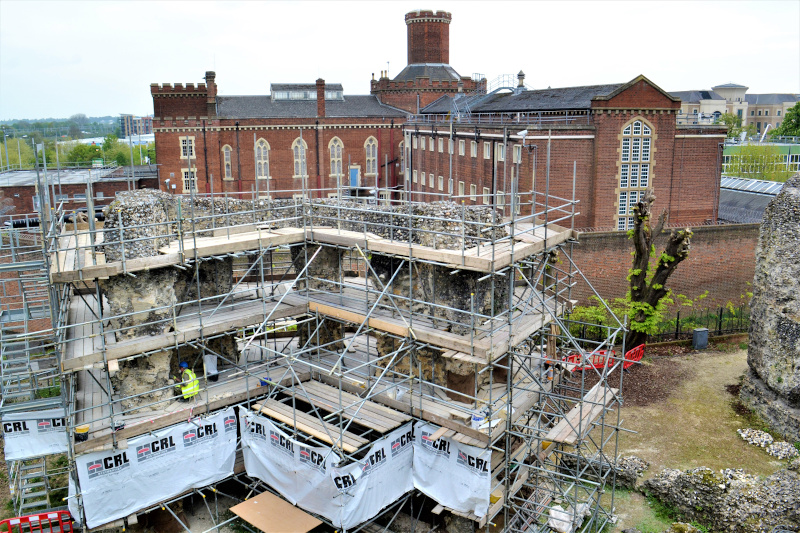
South transept chapels of Reading Abbey covered in scaffolding with Reading Prison behind
Using state-of-the-art-technology, the largely flint-based walls and structures were secured by the contractors, using huge amounts of hand-applied hot-mixed lime mortar. During the whole process, many residents took the chance to join hard-hat tours of the site to see how the work was progressing. One of the previous attempts at securing the top of the walls from erosion had to be replaced (a reasonable solution in the 1980s, bur with a limited life-span), and so a special turf capping was applied to the top of each of the remaining walls, giving the ruins a unique appearance.
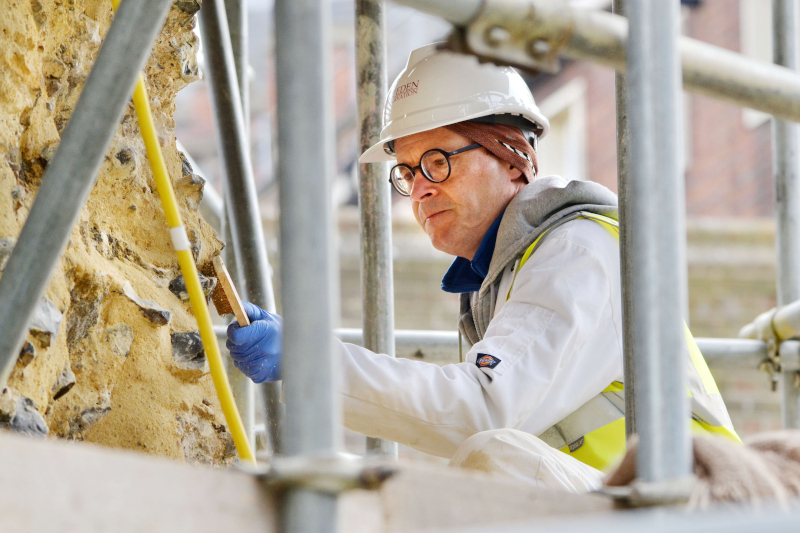
A mason at work on the Abbey Ruins conservation
The Abbey Gateway was scheduled as an Ancient Monument in 1915. The recent restoration has secured the roof and windows from the ravages of time. It also revealed an earlier medieval window frame that survived the building's partial collapse in 1861.
It is now back in use and home to the Museum's Victorian schoolroom today.
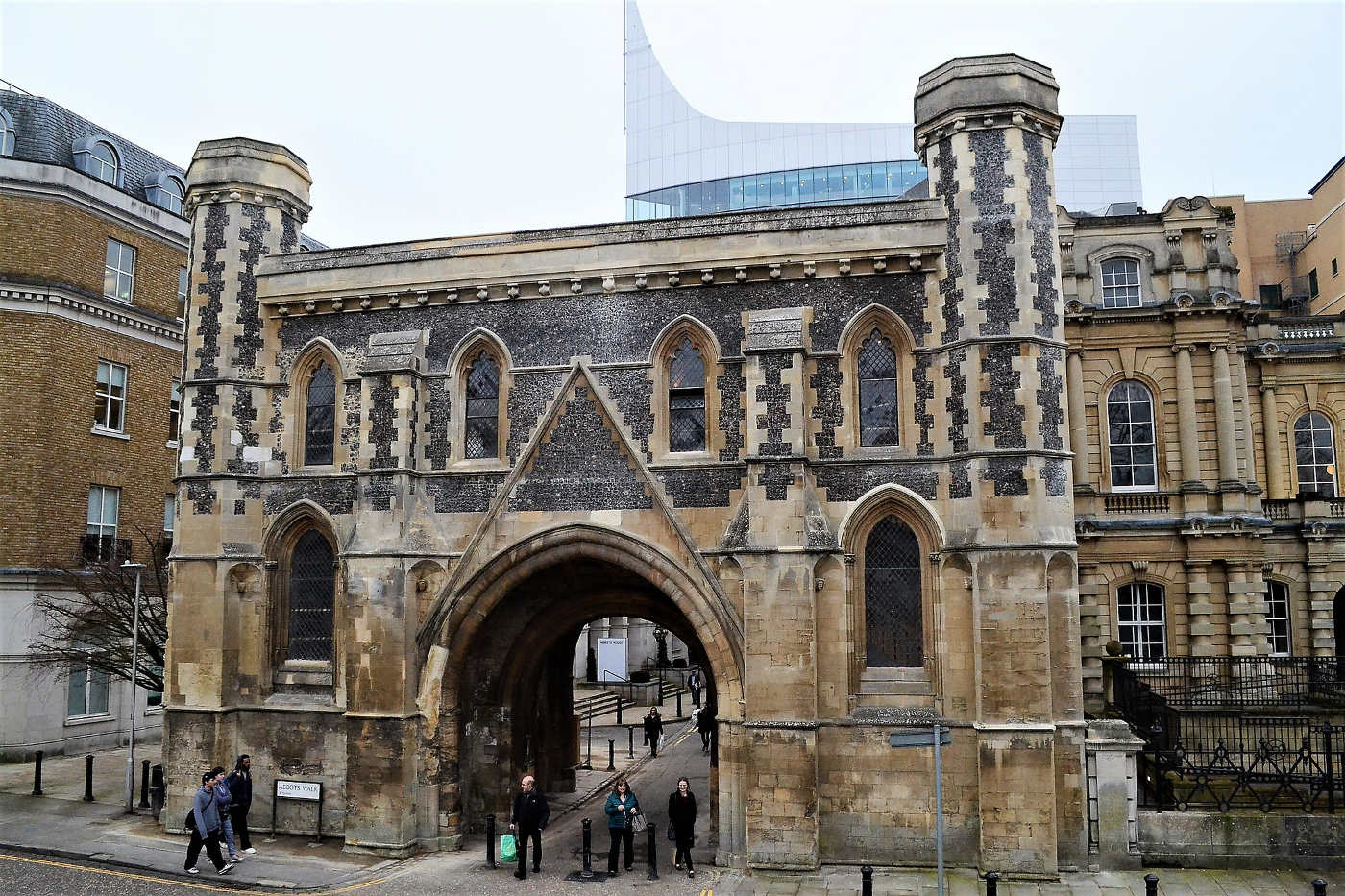
The restored Abbey Gateway
Interested in learning more about the history of Reading? Discover more unique stories of the area's past on our blog, browse our online learning resources, or dive into our collections.
